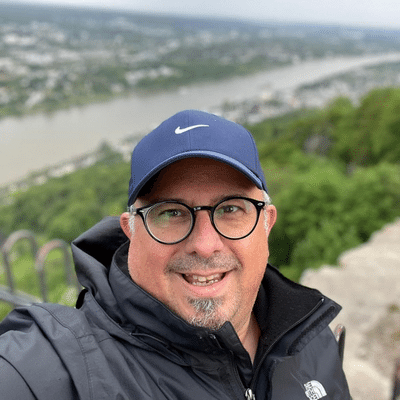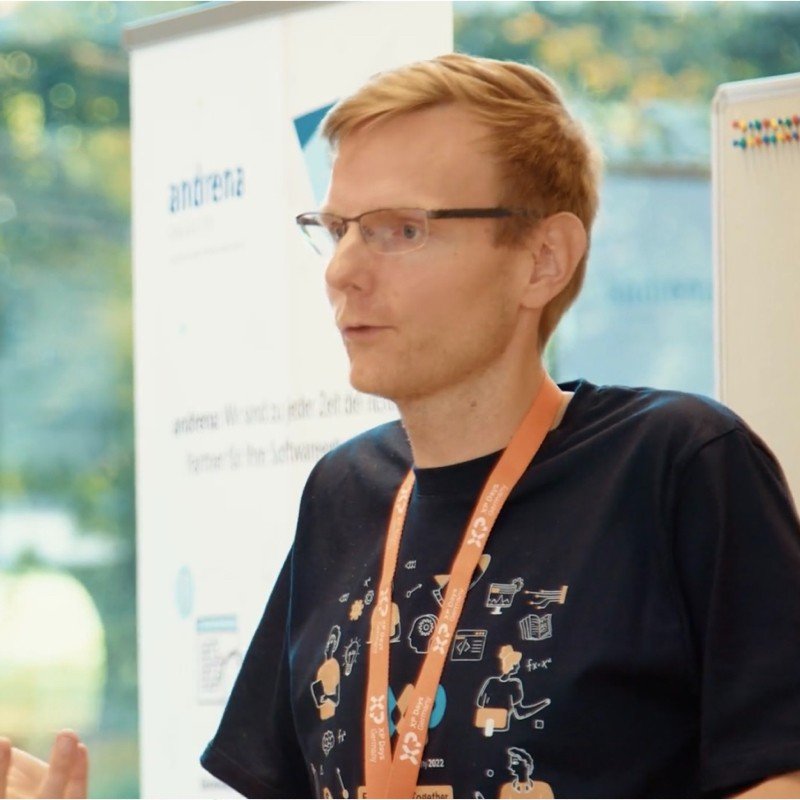Event schedule
Stay tuned as we are in the process of crafting a compelling and enriching program for our event. The schedule, brimming with insightful sessions, interactive workshops, and key networking opportunities, is being meticulously designed by our team of experts. We are committed to providing an agenda that not only aligns with the latest trends in Scrum@Scale and Agile methodologies but also addresses the real-world challenges and opportunities faced by professionals in the field.
Begin your Scrum@Scale Summit experience with a warm welcome at our Badge Pick-Up session. Collect your summit credentials early, avoid the rush. This is the perfect time to energize, meet fellow attendees in a relaxed setting, and gear up for an insightful day ahead. Networking starts here – make the most of it!
Stay tuned for the session announcements that will define your summit experience!
In the world of industry, agility has become a key element to remaining competitive. However, most Industrial products require so many skills that having a team with less than ten people is a mirage. To achieve industrial agility, companies need to scale Scrum from day zero. This presentation aims to dispel doubts and show how agile can permeate the entire industrial lifecycle, from design and prototype to mass production. Through numerous practical examples from Scrum@Scale case studies in Industrial, Oil & Gas, Automotive, and Civil Engineering, taken from the new book ``Scrum for Hardware Explained,`` we will guide you on an exploratory journey into the depths of Scrum applied to industry. During the talk, we will explain why Industrial Agility is an irreplaceable competitive advantage, how to achieve organizational agility in the industry, the key steps to follow, and mistakes to avoid. By the end of this session, you will clearly understand why agility is a critical element in modern and future industries.
In today's rapidly evolving business landscape, the ability to scale operations while maintaining agility is crucial for organizations to stay competitive. However, there exists a phenomenon where as teams grow larger, they often become less agile due to increased bureaucracy, communication barriers, and slower decision-making processes. This abstract explores strategies to address this challenge and proposes ideas to foster scalability without sacrificing agility. To mitigate the risk of losing agility as teams expand, organizations must prioritize fostering a culture of flexibility, adaptability, and innovation. This can be achieved through implementing agile methodologies such as Scrum or Kanban, which emphasize iterative development, frequent communication, and continuous improvement. Additionally, cross-functional teams should be encouraged to collaborate closely, breaking down silos and promoting knowledge sharing.
As once Crag Larman was saying: “culture follows structure”. Research shows, that this sentence applies to all organizations and domains. Based on common agile values & principles and small, holistic teams and teams of teams, organizations are proven more able to make fast decisions and act more customer-centric. Sufficient, self-managed teams and teams of teams also foster alignment of the individuals as well as worker happiness & customer happiness as Daniel Pink points out in his book Drive. According to Scrum@Scale, a minimal viable bureaucracy (MVB) helps to foster cross-team collaboration as well as sufficient stakeholder integration. Through this, an organization speeds up and improves its quality & creativity by focusing on its employees' & customers' needs in their specific context and for their specific problems. The company has around 800 employees and currently, around 62 bloggers, which work in five teams. The company's top challenges According to research and the Registered Scrum@Scale Practitioner training materials, organizations face nowadays to four mega issues: Prioritization: “If an organization can’t prioritize, it will waste time, effort, and money on low-value outcomes” Delivery: “If an organization can’t deliver in a timely manner, it will lose customers and marketplace position” Refactoring: “If an organization can’t regularly refactor people placement and workflow, it will fail to meet production demands” Organization Culture: “If an organization can’t change its culture being at odds with agility, it will lose the battle for attracting and retaining talent” This interactive talk introduces a new holistic view of a team of teams for social media to provide high-quality content for their customers in the finance domain.
In today’s rapidly evolving business landscape, organizations seek to embrace agility and adaptability. Agile transformation coaches play a pivotal role in guiding this journey. This presentation explores how a well-structured Dojo program can cultivate exceptional coaches who drive organizational change at an accelerated, sustainable pace.
Dee will discuss the key components of a successful Dojo Program. These are Dojo environment, structure and training itself. Dee will also share some insights and lessons learned including effective practices, challenges, adaptions and organizational refactoring of the Agile Transformation Model (ATM) itself.
Used by over 125 airline operators worldwide, operating a combined fleet of more than 7,700 aircrafts, Lido Flight 4D is the market leading product for flight planning. The product has been on the market for almost 30 years and is currently in the process of a stepwise renewal. To allow customers an easy migration, Lufthansa Systems has decided to offer the opportunity to run the product in a hybrid mode – which increases the complexity of the transformation as such. Several technical renewals, which also need to be done in a stepwise approach, further increase the challenge of the overall endeavor. Along with the product renewal, a transformation of the organization had to follow to make the changes sustainable. This talk is an open reflection on our journey of transforming both our product - which is a major challenge in itself - and the organization using Scrum@Scale.
Let's explore the innovative agile scaling strategies implemented at a global company, focusing on our “Narrow and Deep” approach within a selected tribe, the integration of leadership and the systematic introduction of structured agile components. Findings of this agile transformation process show the impact of the agile scaling strategies on operational efficiency, project delivery times and overall organizational agility while the positive impact of leadership involvement to the transformation process. Future strategies for scaling intend to expand agile practices within the company. Eventually, analysis and evaluation of the process, variables, outputs, challenges and improvements of this Agile Transformation journey may help to provide insights into how other organizations can adapt these practices for their Agile transformations.
Jeff Sutherland, co-creator of Scrum and Scrum@Scale, will be with us at Scrum@Scale's first summit with a presentation about his new book ``First Principles in Scrum`` explaining how Scrum@Scale evolved from the first principles of Scrum.
Telcos recently discovered lightweight approaches to descaling and scaling their organization and value delivery. We will show how dedicated innovation hubs that incorporate new technology like genAI can stay independent of their mothership while being aligned on the overall direction. By using proven patterns to let employees own the way to build their system of work, we have streamlined operations of innovation intake and portfolio orchestration. The MetaScrum pattern paired with the pattern InvolveTheManagers is ideal to establish local decision making where the information is while staying aligned with the overall organization's strategy. Product Owner Team can run more effective allocation of funds, skills and capacity for teams of teams working on time-critical innovation initiatives like genAI piloting, new network infrastructure additions, and new approaches to customer need discovery fully supported by AI.
Agile transformations hold immense promise for increased adaptability and innovation. However, many organizations struggle to realize the full benefits due to a lack of objective measurement & course correction. This abstract presents a data-driven approach to agile transformation, leveraging data insights to guide continuous improvement. The approach draws on the experience of witnessing multiple agile transformations across diverse organizations. It emphasizes collecting & analyzing data from various sources. By integrating data into the transformation journey, organizations can move beyond subjective assessments and ensure continuous improvement. This data-driven approach fosters agility's core principles, leading to a more successful transformation and a competitive edge.
Is the way we work sustainable?Are there any deficiencies?Is the operating model scalable?Are the people happy?An agile transformation journey requires data driven decisions that need to be empowered by shifting towards the mindset of emerging practices. Data-driven decisions are the vehicle of change. Shifting from opinion oriented decisions to data oriented supports every single change. Measure the impact of actions and ensure the progress is always visible. A successful transformation journey is full of ``aha`` moments and quick wins that helps us see the light at the end of the tunnel.
Understand the current situation by developing foundational data. Work with higher management and understand the vision, do a GAP Analysis, assess the risks and develop an OKR structure to measure the progress. Setup the Business Intelligence to support decisions, implement Scrum at Scale operating model by launching a POC, establish a dual operating model, have a solid change management strategy, establish communication channels to support the people and gradually shift the organization to the new way of working.
Dive into a series of meticulously curated sessions designed to ignite innovation and foster mastery in Scrum@Scale. Each session promises a unique blend of knowledge, practical insights, and interactive discussions, ensuring you leave with valuable takeaways and new perspectives. Stay tuned for the session announcements that will define your summit experience!
Facilitation is more than a collection of formats, tricks, structures, and templates. In this session, we will go beyond the surface and uncover the reasons behind their usage, supported by scientific evidence from cognitive processes to behavioral psychology.
Through interactive discussions and practical examples, we will explore how these facilitation tools contribute to effective communication, collaboration, and personal engagement. You will gain insights into the underlying principles that drive successful facilitation and discover practical strategies to apply in your facilitation practice.
This session is designed to be highly interactive, ensuring active participation and engagement from all attendees. As we journey through the 5P's of Personal Engagement, you can share your experiences, ask questions, and collaborate with fellow participants.
By the end of this session, you will feel empowered to become a more effective facilitator yourself, equipped with the knowledge and tools to create meaningful and engaging experiences for your participants.
Three divisions, 30+ agile teams, the majority working with Scrum since 2014. Synchronized, two-weeks Sprints the teams. Small requirements delivered in-time within a quarter (~85%). Whenever multiple teams need to work on complex requirements, inefficient coordination and long cycle times occurred (3 quarters +). Between Q1 and Q4 2023, I was accountable for a S@S implementation for the entire product unit (30+ teams). The case is about why S@S as scaling framework was choosen, how the implementation was conducted and about strength and pitfalls of S@S. Complementary practices will be mentioned.
Understanding team performance has almost always been difficult. There may be a heap of metrics that you could look at, but which of those are the driving ones for the team improvement and product outcome? And probably there is a lot of data for reports in different systems but making them meaningful is a tough nut to crack. The key challenges are; deciding which of the metrics are important for the improvement of the team and having an automated combined report to show a summary of the team performance. In this presentation I will explain first of all which metrics can be vital for Agile teams and how you can create an automated combined system for these metrics and use these meaningful data to boost feedback culture and transparency. In this way, the team can check this system continuously and decide if they need to improve themselves for the moment. If you are using Grafana, creating such a system is going to be easy for you too! You can also apply it to all teams in your company!
The digital transformation field is full of both challenges and chances for big companies aiming to be quick and efficient. In 2023, Lufthansa Systems started a step-by-step renewal of its Lido Flight product line, supported by the Scrum@Scale framework. This Session will describe the gradual approach LSY took. Central to the transformation is the agile reshaping of the Scrum of Scrums to better fit evolving metrics and organizational needs through 2024. LSY's new agile structure was designed and tested using a thorough analysis of Product Backlog items, paving the way for this evolution. The objective is to illustrate Scrum@Scale's role in reinforcing LSY's strategic goals, which has resulted in enhanced collaboration, efficiency, and adherence to the company's overarching direction.
Dive into a series of meticulously curated sessions designed to ignite innovation and foster mastery in Scrum@Scale. Each session promises a unique blend of knowledge, practical insights, and interactive discussions, ensuring you leave with valuable takeaways and new perspectives. Stay tuned for the session announcements that will define your summit experience!
As Turkey's largest software company, we've thrived as the primary technology partner for Turkey's leading private bank. Yet, our exclusive focus on one client limits exposure to diverse market demands, hindering portfolio expansion. Recognizing the need to diversify, we embark on an Agile & Cultural transformation. Through this journey, we seek to broaden market reach and foster a culture of agility, collaboration, and innovation for global success by establishing high-performing teams. Our initial objectives focused on fostering company-wide alignment with Softtech’s purpose, vision, mission, and values, alongside restructuring our systems to reflect these core tenets, effectively shaping a new organizational identity. Subsequently, we initiated a cultural shift, commencing with leadership, to cultivate a culture conducive to high-performing teams. Operational adjustments were made to synchronize processes, tools, structure, and strategy with our redefined mission. We emphasized the sustainability and internalization of this transformation program. Thus, drawing inspiration from genetics, named it “DNA”. Our efforts have yielded remarkable results, evidenced by a notable decrease in cultural entropy, indicating a more cohesive and collaborative work environment.
With the increasing pace of technological advancement, the complexity of digital transformation companies undergo to adapt to this change is also growing. Current studies characterize this complexity as multidimensional, continuous, disruptive, radical, and complex. In practice, companies need to explore innovative and suitable methods to overcome this complexity, continuously. To support this, there is a need for scientific studies to fill the gap that constantly emerges between practice and theory. An up-to-date digital transformation model has been designed in light of interviews with executive-level managers in organizations that have practical experience in digital transformation, along with the examination of frameworks and maturity models in the literature. Through this model, the data is collected with a questionnaire using scales of employee engagement, employee performance and organizational performance, and misalignment in digital transformation. Grounded theory and structural equation modeling were used for data analysis. Findings show that misalignment in digital transformation negatively affects employee performance and organizational performance with a full mediation effect of employee engagement.
Dive into a series of meticulously curated sessions designed to ignite innovation and foster mastery in Scrum@Scale. Each session promises a unique blend of knowledge, practical insights, and interactive discussions, ensuring you leave with valuable takeaways and new perspectives. Stay tuned for the session announcements that will define your summit experience!















